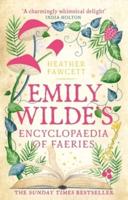Publisher's Synopsis
Charles Lutwidge Dodgson ( 27 January 1832 - 14 January 1898), better known by his pen name Lewis Carroll, was an English writer, mathematician, logician, Anglican deacon, and photographer. His most famous writings are Alice's Adventures in Wonderland, its sequel Through the Looking-Glass, which includes the poem "Jabberwocky", and the poem The Hunting of the Snark - all examples of the genre of literary nonsense. He is noted for his facility at word play, logic and fantasy. There are societies in many parts of the world dedicated to the enjoyment and promotion of his works and the investigation of his life. From a young age, Dodgson wrote poetry and short stories, contributing heavily to the family magazine Mischmasch and later sending them to various magazines, enjoying moderate success. Between 1854 and 1856, his work appeared in the national publications The Comic Times and The Train, as well as smaller magazines such as the Whitby Gazette and the Oxford Critic. Most of this output was humorous, sometimes satirical, but his standards and ambitions were exacting. "I do not think I have yet written anything worthy of real publication (in which I do not include the Whitby Gazette or the Oxonian Advertiser), but I do not despair of doing so some day," he wrote in July 1855. Sometime after 1850, he did write puppet plays for his siblings' entertainment, of which one has survived: La Guida di Bragia. In 1856, he published his first piece of work under the name that would make him famous. A romantic poem called "Solitude" appeared in The Train under the authorship of "Lewis Carroll". This pseudonym was a play on his real name: Lewis was the anglicised form of Ludovicus, which was the Latin for Lutwidge, and Carroll an Irish surname similar to the Latin name Carolus, from which comes the name Charles. The transition went as follows: "Charles Lutwidge" translated into Latin as "Carolus Ludovicus". This was then translated back into English as "Carroll Lewis" and then reversed to make "Lewis Carroll".This pseudonym was chosen by editor Edmund Yates from a list of four submitted by Dodgson, the others being Edgar Cuthwellis, Edgar U. C. Westhill, and Louis Carroll. In 1856, Dean (i.e., head of the college) Henry Liddell arrived at Christ Church, bringing with him his young family, all of whom would figure largely in Dodgson's life over the following years, and would greatly influence his writing career. Dodgson became close friends with Liddell's wife Lorina and their children, particularly the three sisters Lorina, Edith, and Alice Liddell. He was widely assumed for many years to have derived his own "Alice" from Alice Liddell; the acrostic poem at the end of Through the Looking Glass spells out her name in full, and there are also many superficial references to her hidden in the text of both books. It has been noted that Dodgson himself repeatedly denied in later life that his "little heroine" was based on any real child, and he frequently dedicated his works to girls of his acquaintance, adding their names in acrostic poems at the beginning of the text. Gertrude Chataway's name appears in this form at the beginning of The Hunting of the Snark, and it is not suggested that this means that any of the characters in the narrative are based on her. Information is scarce (Dodgson's diaries for the years 1858-1862 are missing), but it seems clear that his friendship with the Liddell family was an important part of his life in the late 1850s, and he grew into the habit of taking the children on rowing trips (first the boy Harry, and later the three girls) accompanied by an adult friend to nearby Nuneham Courtenay or Godstow. It was on one such expedition on 4 July 1862 that Dodgson invented the outline of the story that eventually became his first and greatest commercial success.............








